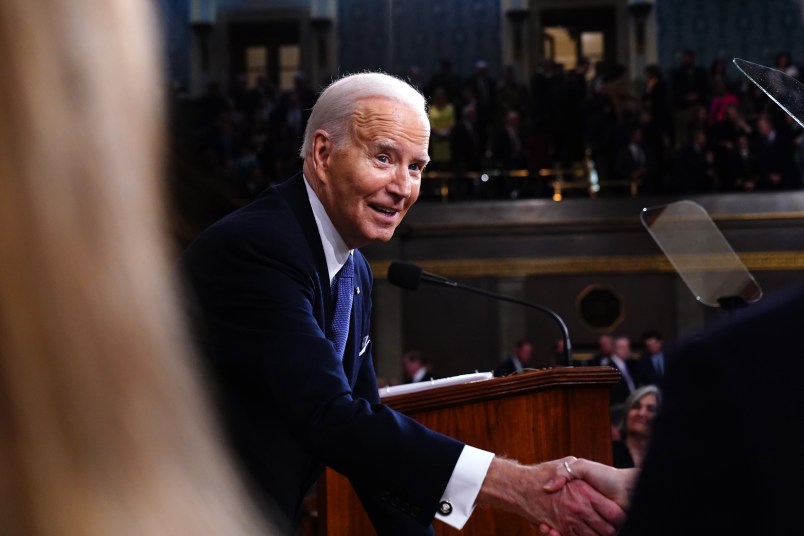It’s almost a cliche at this point: The story of a once vibrant and proud mid-sized city paper, now hollowed out to almost nothing by distant corporate owners slashing jobs amidst the decline of local news. This morning I saw this version of the story published by The Boston Globe about The Providence Journal. In this case I feel a bit more connected to the story. The ProJo bills itself as the oldest continuously published daily in the United States — and, more to the point for me, I lived in Providence for six years as a graduate student in 1990s. So I feel some sense of connection and identification with it.
It’s a sad, familiar and in many ways embarrassing story. The ProJo once had a dozen bureaus throughout the tiny state of Rhode Island and its own bureau in D.C. Now it’s down to just a dozen reporters total. The Globe itself, seeing the opening, is staffing up its Rhode Island presence and in so doing likely hastening the ProJo’s steep decline which has brought circulation to just under 30,000, print and digital — barely a tenth of its one-time circulation.
There’s an element, though, that gets lost in these stories. It’s not just corporate greed versus journalistic idealism. That’s too easy a story. To get to the rub of this story you need to grapple with three interconnected economic and technological transformations that collided together in the first decades of the 21st century. But before we get to those trends, let’s jump to what’s paradoxically simpler: what’s the solution? Family ownership. Why is the Globe reporting this story about the ProJo and not vice versa? Family ownership — in this case, the family of John W. Henry, a New England billionaire who also owns the Red Sox. The Globe passed from the Taylor family to the Times/Sulzberger family to Henry’s ownership. It’s also the reason that the LA Times, which by rights should have been one of the dominant national papers of record along with the Times, the Post and the Journal, was reduced to a mere husk of a paper before beginning a revival under Patrick Soon-Shiong, another billionaire owner, who purchased the paper in 2018.
This isn’t a pro-billionaire story. This also isn’t a story about needing some absurdly rich person to permanently fund the losses that go with good journalism. That story is just nostalgia, often with a healthy serving of lefty anti-business-ism and the false history that holds that journalism of the late 20th century was the natural and proper state of what journalism was, is and always should be. The key is that the entity controlling the paper has to be committed not just to making money but to making money in the newspaper business.
The reality is that for about three decades the newspaper business has been a really bad business to be in. If you were in that business to make returns on your investment the right decision was to get out of that business because returns were down and all the signs rightly pointed to those returns getting harder and harder to come by over time.
The internet made it the case that your mid-sized paper’s Washington bureau really didn’t make any sense anymore. Certainly any foreign bureaus you had didn’t make sense anymore. Because if you were a newspaper reader in Cleveland or Providence you didn’t have to rely on the Plain Dealer or the ProJo for that coverage. You had better and better-funded options online. The internet also broke those local papers’ monopoly on commercial advertising. A decade later those monopolies were being rebuilt on the national level by platforms like Google and Facebook. I’ve written about these parts of story countless times in the Editors’ Blog. No need to do so here again. But there’s one additional part of the story we need to discuss here.
In the 1980s and early 1990s the newspaper business was absurdly profitable. The monopoly era had maxed out and the Internet era hadn’t quite arrived. Wall Street-backed investors started building chains of papers. The logic was obvious: hoover up the insane profits and create efficiencies with national economies of scale to reduce costs. Then the internet happened and the whole logic fell apart. Ever since those national chains have been squeezing the old business model for every last drop as the business model fell apart. That meant relentless cost cutting. Then there’s one additional factor. Those chains took on huge levels of debt to finance those acquisitions. So not only are they squeezing the dying business model for every drop of profit. They’re squeezing it in large part to service the debt they took on to build the national chain in the first place. It’s a brutal, ugly story. But you can’t capture the fullness of the story accurately without recognizing that the broken business model is its core driver.
It’s not family ownership that is special precisely. It’s ownership or control by people who have a strong extra-economic investment in being in the news business. It’s just that family ownership is the most common model where that has applied. A new version of that is now coming online with the various non-profit newsroom start-ups. In this case, the ones I’m talking about are the ones that basically operate on a subscription basis rather than through large donors, though every model has its place and I’m not saying one is better than another. I’m just saying those are more comparable to family ownership.
I know a lot about this in part because of those six years I spent in Providence studying American history. But, far more, my experience running TPM has been helpful for me in understanding the dynamics of the transformation, even though we’re very different from these long-established papers. Basically, it’s been a huge challenge keeping TPM running over the last decade. I’m not asking for any awards. I have been and still am able to do exactly what I want to do and make a nice living at it, which is like hitting the jackpot of life basically. My point is that TPM exists because I wasn’t just really focused on making a living but really focused on making a living running TPM. Needless to say there are a lot of people in the organization who were and continue to be critical to making this possible. But ownership has to be committed too.
This is the analog to family-run newspapers. Those families had big intergenerational wealth. But they had various reasons why they were committed to newspaper publishing. Sometimes it was just civic-mindedness. Sometimes it was a deep belief in journalism. Probably more often it was the standing it gave them in their communities in addition to the wealth it provided. (This is why sports term owners now often own the newspaper too — similar mix of motivations.) Sometimes it was simply all they knew so they wanted to be sure the cash cow kept delivering.
The overall point is that even in a period of huge disruption in the news business there were ways to keep a lot of these papers viable and even profitable, albeit at much lower rates of profit than they were managing in the late 20th century. A family that owns the newspaper in a mid-sized city doesn’t need it to be hugely profitable to keep them living in the lap of luxury. But if you were looking at it purely as a matter of profit maximization or the need to draw profits in the short and medium term then it made total sense to gut them as these private equity-backed national chains did. It was just a bad business to be in once the disruption of the Internet came along. No private owner is going to pour resources into floating a company that can’t carry its own weight.
But if you’re there on the ground in a particular city and really focused on making it work there are ways to do it — not in every case, but in a lot of them. You can work developing different sources of revenue. You can build different business models altogether. (TPM has a completely different business model than it did a decade ago.) You also certainly would have to cut costs compared to what these papers were doing from the 1970s through the 1990s. But cost-cutting can be done in ways that leave you with a smaller but still viable news organization. Having a wealthy owner who can invest new money to get a paper to a new stability and profitability is obviously a huge advantage. These chains simply sucked all but a few papers dry and they continue to do so.
Of course there are obvious downsides to family ownership of the local paper. The most obvious is that you’ve got one family, or whatever new generation of that family, who runs the big news organization in town. Their politics become hugely important, their financial interests can impact news coverage in various ways. These are big downsides, and there are others. But if you want there to be a local paper, I would argue the upsides outweigh the downsides for the reasons I’ve noted.
The ideal solution would be for some loaded New Englander to buy the ProJo from Gannett and set about rebuilding it into something viable. It’s not like there isn’t plenty of news in Rhode Island and the adjacent parts of Massachusetts which are part of the Providence media market. Indeed, Rhode Island generally has more news person for person and acre for acre than almost any other part of the country, in large part because it’s so weird and notoriously corrupt. Presumably the suits at Gannett see it as in their interest to drive it further into the ground and it’s doomed. That’s a shame.

 Members-Only Article
Members-Only Article




